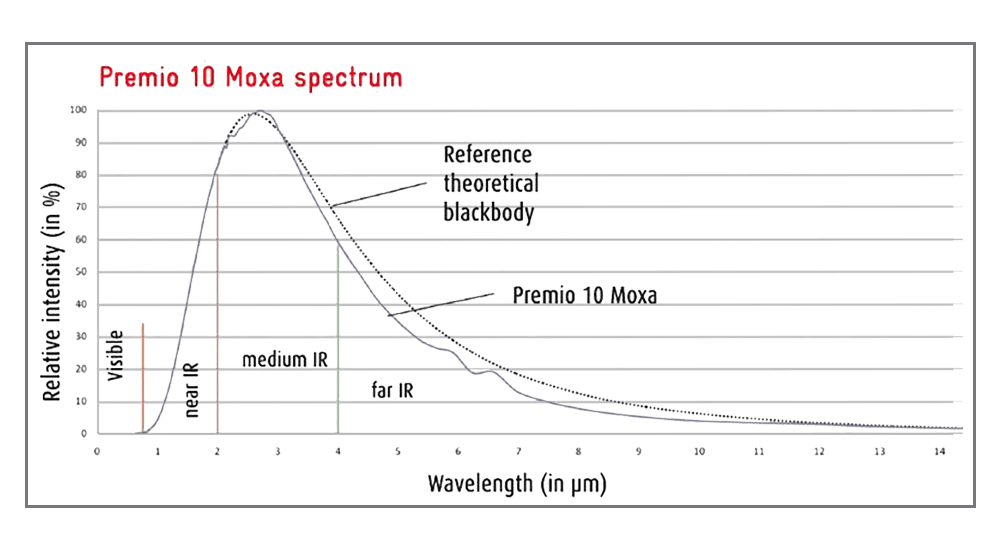TECHNOLOGY
Electrical moxibustion
The innovative PREMIO 10 MOXA is the 1st electrical moxa device specially designed to be as effective as traditional moxibustion.
ABOUT US
Titre 2 sur sedatelec et
l'auriculomédecine
PRODUITS
LEs gammes d'auricilomédecine
PRODUITS
LEs gammes d'auricilomédecine
Témoignages
The characteristics of the burning Artemisia spectrum…
When Artemisia is lit with a lighter or a stick of incense, it burns without flame, glowing red, and forms ashes that, if not removed (while falling or through the intervention of the practitioner), slows down combustion and modifies the spectral emission.
The heat emitted is in the form of electromagnetic radiation, that is waves carrying energy.
The spectral emission is very similar to that of a black body.
A black body is an ideal object where the electromagnetic spectrum – meaning the distribution of the quantity of energy according to wave length- depends only on its temperature.
This curve has a specific shape, continuous, with a peak corresponding to the wave length carrying the most energy, and a more or less straight slope for smaller and greater wavelengths.
Artemisia: a spectrum in the infrareds
Burning Artemisia has a very broad emission spectrum, with the wavelengths across the red (in the visible spectrum) and short infrared, with a peak situated in the medium infrared, and a strong proportion of long infrared.
If combustion is activated, by blowing over it for example, the temperature of the Artemisia rises to 850-900°C, the spectral peak is situated around 2.6 μm, and there is a high proportion of short and medium infrared. When combustion weakens (presence of ash for example), the temperature of the Artemisia falls to around 650°C, and the peak is close to 3 μm, shifting the spectrum downwards (less energy transmitted) towards the long infrared.
The distribution of wavelengths across such a wide range is a basic characteristic of Artemisia, and largely explains its effectiveness, due to its being appropriate for the physiological, thermo- and photo- receptors of the organism.

It is not enough to provide stimulation with caloric energy, it must be heat that can be absorbed, assimilated and that naturally depends on the receptors’ window of electromagnetic sensitivity. Further, the cutaneous thermoreceptors must not be saturated, as they are sensitive to external temperature and, if one exceeds their tolerance threshold, they will lead the patient to reflexively recoil from the pain, limiting the time of application.

… and of the Premio 10 moxa
The emitter designed for the Premio 10 moxa has spectral emission characteristics itself replicating those of burning Artemisia.
It really is a “moxa-like!” !
It behaves like an almost perfect black body, and, when in use, the emitter is stabilized at 850° C, and has a spectral peak to 2,6 μm.
Thus, by way of counter-example, a halogen type emitter, where the emission spectrum is much shorter, and centred on the visible, will not provide the same energy absorbed by the body, even (and especially) if it is at a very high temperature. The patient will almost immediately feel burning, and also very few radiations will penetrate the tissue, being outside the skin’s window of sensitivity.
OUR FLAGSHIP PRODUCT
PREMIO 10 MOXA
1st electric moxa device specifically designed to be as effective as traditional moxibustion.

